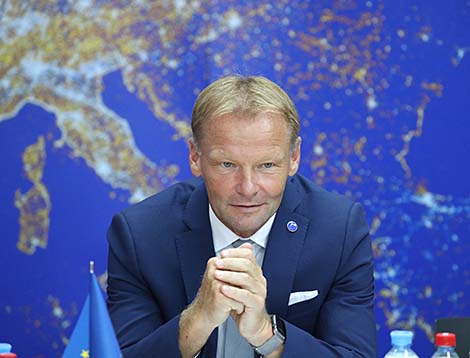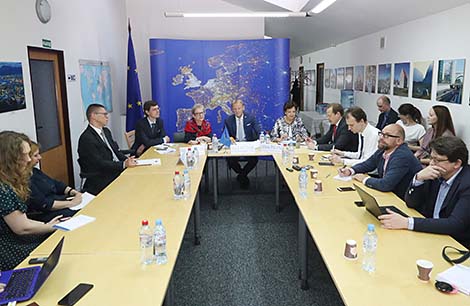Business news
EIB loan portfolio in Belarus may be increased to €1bn

MINSK, 24 July (BelTA) - The total loan portfolio of the European Investment Bank (EIB) in Belarus may be increased to €1 billion within several years, EIB Vice President Vazil Hudak told the media, BelTA has learned.
If everything goes well and the situation evolves as we plan, the annual funding of projects in Belarus can reach €200-300 million, and then, in two or three years, total €1 billion, he said.
Currently, the total amount of EIB project portfolio in Belarus stands at €335 million. In particular, these are the projects to support small and medium business worth of €75 million which are carried out by Belarusbank and Belagroprombank. These banks are entitled to on-lend, on their own terms, to various economic entities in the country. Among those who have already received support are mainly enterprises of the manufacturing sector, agriculture and trade.
Now the EIB is in negotiations with Belarus to extend the list of banks to participate in the SME support program. “Once we finish the discussion of additional funding for local banks to support small and medium-sized businesses, the total amount of EIB loan portfolio in Belarus will reach €500 million by the end of this year, Vazil Hudak said. He also stressed that the development of small and medium-sized enterprises is an important area for the EIB as a whole. About a third of projects target SMEs. In money terms this is €20-25 billion.
 When asked about the EIB plans to implement other projects in Belarus Vazil Hudak said that “it takes two to tango”. “It is not enough to just provide funds. It is important that Belarus generate project ideas for financing,” he added. Among the important criteria by which the EIB evaluates the possibility of its participation in a project is its economic sense, profitability. At the same time the EIB precludes its involvement in politically motivated projects. “As a bank promoting development we do not come into a country to replace commercial banks. If a project can be implemented by a commercial bank, we do not interfere. Only if there are gaps in the market, we step in, often in cooperation with commercial banks,” he said.
When asked about the EIB plans to implement other projects in Belarus Vazil Hudak said that “it takes two to tango”. “It is not enough to just provide funds. It is important that Belarus generate project ideas for financing,” he added. Among the important criteria by which the EIB evaluates the possibility of its participation in a project is its economic sense, profitability. At the same time the EIB precludes its involvement in politically motivated projects. “As a bank promoting development we do not come into a country to replace commercial banks. If a project can be implemented by a commercial bank, we do not interfere. Only if there are gaps in the market, we step in, often in cooperation with commercial banks,” he said.
From the point of view of loan recipients the terms offered by the EIB are more attractive because the bank provides funding for the long term.
The EIB vice president also offered his opinion about structural reforms in Belarus. “If Belarus plans to grow faster than 2.5-3% of GDP, it needs to undertake structural reforms. Of course, it is not easy to do. Such reforms in many European countries were painful. Structural reforms is the sovereign decision of a country, in this case, of Belarus. From our side we are ready to support such reforms, provide the EU expertise and tell how these reforms can enhance productivity and to share our technology know-how, he noted.
According to him, Belarus has great potential, there are many professionals with an excellent level of education, a promising IT sector and the country needs to use this potential, to develop it.
The EIB is one of the world's largest multilateral investment banks. Founded in 1958, the bank is headquartered in Luxembourg. The equity capital is formed by 28 countries, the European Union members. About 90% of the EIB projects are implemented within the EU, 10% outside its borders.
The European Investment Bank signed the first agreements with Belarus in November 2018. Those were the €50 million loan agreement to support small and medium enterprises with Belagroprombank and the €25 million loan agreement with Belarusbank, and the €85 million loan agreement to rehabilitate and modernize the Minsk wastewater treatment plant.







 print version
print version make home page
make home page add to bookmarks
add to bookmarks

